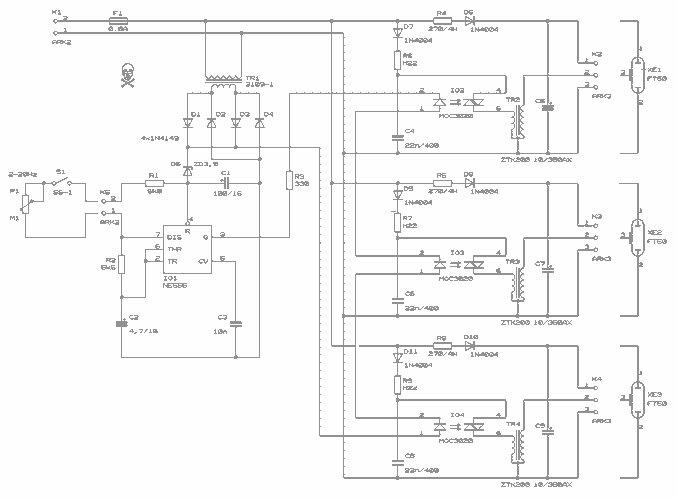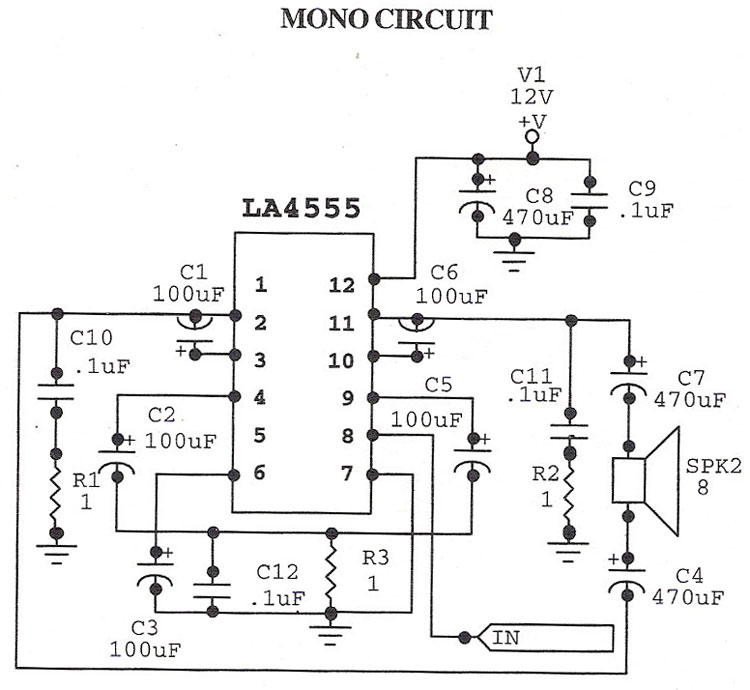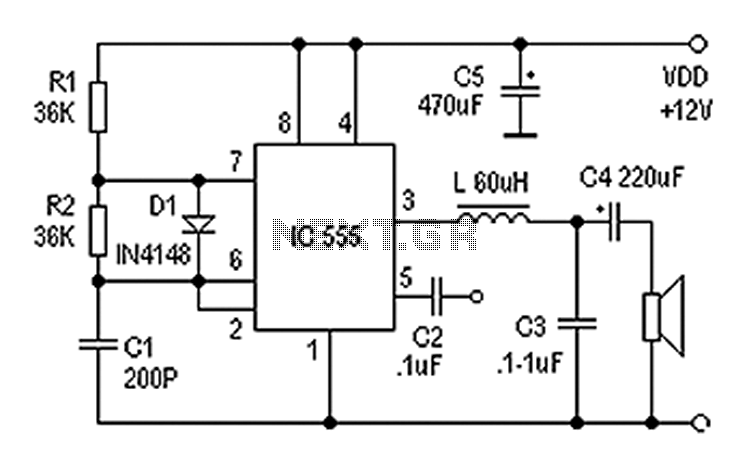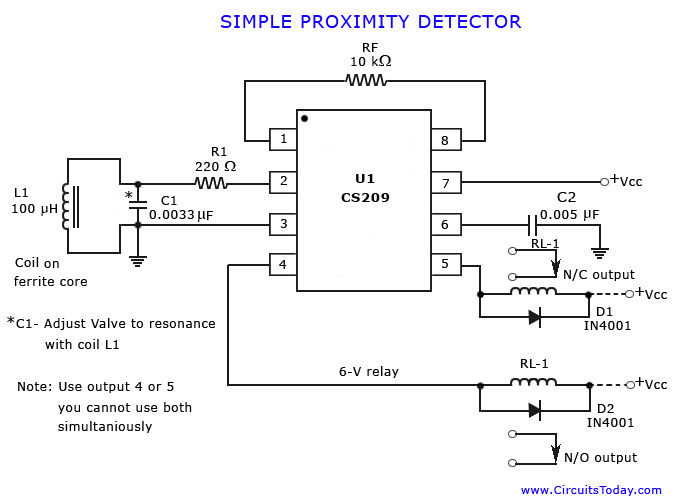
Infra-red Level Detector with 555

Useful for liquids level detection and proximity devices. Up to 50 cm range, optional relay operation. This circuit is useful in liquids level or proximity detection. It operates detecting the distance from the target by reflection of an infra-red beam. It can safely detect the level of a liquid in a tank without any contact with the liquid itself. The device's range can be set from a couple of cm to about 50 cm by means of a trimmer. Range can vary, depending on infra-red transmitting and receiving LEDs used and is mostly affected by the color of the reflecting surface. Black surfaces lower greatly the device's sensitivity. More: IC1 forms an oscillator driving the infra-red LED by means of 0.8 mSec pulses at 120Hz frequency and about 300mA peak current. D1 & D2 are placed facing the target on the same line, a couple of centimeters apart, on a short breadboard strip. D2 picks-
The circuit operates on the principle of pulse modulation using an infrared LED (D1) to emit an infrared beam toward the target. The reflected beam is detected by a photodiode (D2), which is positioned close to the LED to ensure accurate detection of the reflected signal. The modulation frequency of 120 Hz and pulse width of 0.8 milliseconds are critical for distinguishing the reflected signal from ambient light interference.
The oscillator circuit, represented by IC1, generates the necessary pulse train to drive the LED. The peak current of approximately 300 mA allows for a strong infrared beam, enhancing the detection range. The sensitivity of the circuit can be adjusted using a trimmer potentiometer, which modifies the threshold level for the detection of the reflected signal.
The circuit is capable of detecting distances ranging from a few centimeters up to 50 cm, making it versatile for various applications, including liquid level detection in tanks. The performance of the device can be influenced by the color and texture of the reflecting surface; for example, dark surfaces tend to absorb infrared light, reducing the effective range and sensitivity of the device.
For applications requiring relay operation, the circuit can be designed to include a relay module that activates when the liquid level reaches a predetermined height, allowing for automated control of pumps or alarms. This feature enhances the utility of the circuit in practical scenarios, such as automated water level control in reservoirs or aquariums.
Overall, this infrared-based proximity and level detection circuit offers a non-contact solution for various applications, combining simplicity with effective performance.Useful for liquids level detection and proximity devices Up to 50 cm. range, optional relay operation. This circuit is useful in liquids level or proximity detection. It operates detecting the distance from the target by reflection of an infra-red beam. It can safely detect the level of a liquid in a tank without any contact with the liquid itself. The device`s range can be set from a couple of cm. to about 50 cm. by means of a trimmer. Range can vary, depending on infra-red transmitting and receiving LEDs used and is mostly affected by the color of the reflecting surface. Black surfaces lower greatly the device`s sensitivity. IC1 forms an oscillator driving the infra-red LED by means of 0.8mSec. pulses at 120Hz frequency and about 300mA peak current. D1 & D2 are placed facing the target on the same line, a couple of centimeters apart, on a short breadboard strip. D2 picks- 🔗 External reference
The circuit operates on the principle of pulse modulation using an infrared LED (D1) to emit an infrared beam toward the target. The reflected beam is detected by a photodiode (D2), which is positioned close to the LED to ensure accurate detection of the reflected signal. The modulation frequency of 120 Hz and pulse width of 0.8 milliseconds are critical for distinguishing the reflected signal from ambient light interference.
The oscillator circuit, represented by IC1, generates the necessary pulse train to drive the LED. The peak current of approximately 300 mA allows for a strong infrared beam, enhancing the detection range. The sensitivity of the circuit can be adjusted using a trimmer potentiometer, which modifies the threshold level for the detection of the reflected signal.
The circuit is capable of detecting distances ranging from a few centimeters up to 50 cm, making it versatile for various applications, including liquid level detection in tanks. The performance of the device can be influenced by the color and texture of the reflecting surface; for example, dark surfaces tend to absorb infrared light, reducing the effective range and sensitivity of the device.
For applications requiring relay operation, the circuit can be designed to include a relay module that activates when the liquid level reaches a predetermined height, allowing for automated control of pumps or alarms. This feature enhances the utility of the circuit in practical scenarios, such as automated water level control in reservoirs or aquariums.
Overall, this infrared-based proximity and level detection circuit offers a non-contact solution for various applications, combining simplicity with effective performance.Useful for liquids level detection and proximity devices Up to 50 cm. range, optional relay operation. This circuit is useful in liquids level or proximity detection. It operates detecting the distance from the target by reflection of an infra-red beam. It can safely detect the level of a liquid in a tank without any contact with the liquid itself. The device`s range can be set from a couple of cm. to about 50 cm. by means of a trimmer. Range can vary, depending on infra-red transmitting and receiving LEDs used and is mostly affected by the color of the reflecting surface. Black surfaces lower greatly the device`s sensitivity. IC1 forms an oscillator driving the infra-red LED by means of 0.8mSec. pulses at 120Hz frequency and about 300mA peak current. D1 & D2 are placed facing the target on the same line, a couple of centimeters apart, on a short breadboard strip. D2 picks- 🔗 External reference





